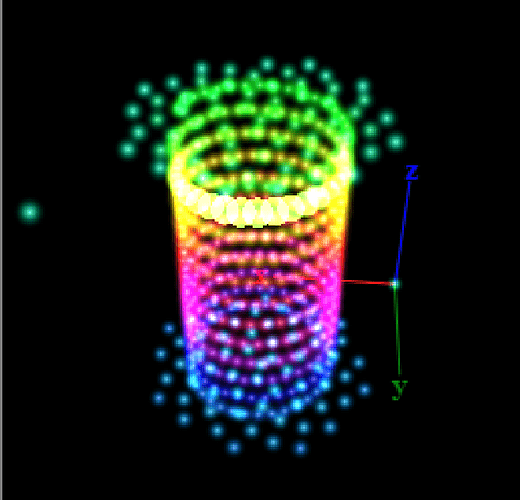I think if you give people a chance you’ll find them very helpful.
Here’s an example of a thread where I needed help mapping a type of cylinder and you can see how so many different users responded to assist.
https://forum.electromage.com/t/mapping-complex-objects/
I started with the online mapping tool. If you haven’t seen it, have a read on this thread:
https://forum.electromage.com/t/2d-pixel-coordinate-mapping-tool-for-images/
(this would be only for the top of the cylinder you mentioned. The sides of the cylinder would be a different process but I’ll explain that later).
Essentially,
- you take a picture of your 2D matrix
- upload the pic to the online tool
- on the picture, click where each LED is in the order they are numbered
for the sides of the matrix you can see the same link I used:
you paste all those codes into the mapping tab and tweak it for your specifics, then eventually you should see an image like this:
it takes a while to figure out, but it offers a lot more flexibility than the controllers you’ve posted screenshots of. I don’t see that any of those offer any mapping abilities.
Part of my professional career is teaching users how to use new software, so I’d be happy to help you, and we could even jump on a screen share if you’re interested.
I admit I may be guilty of being one of those consumers Jeff mentioned so I’d love to contribute back however possible.
